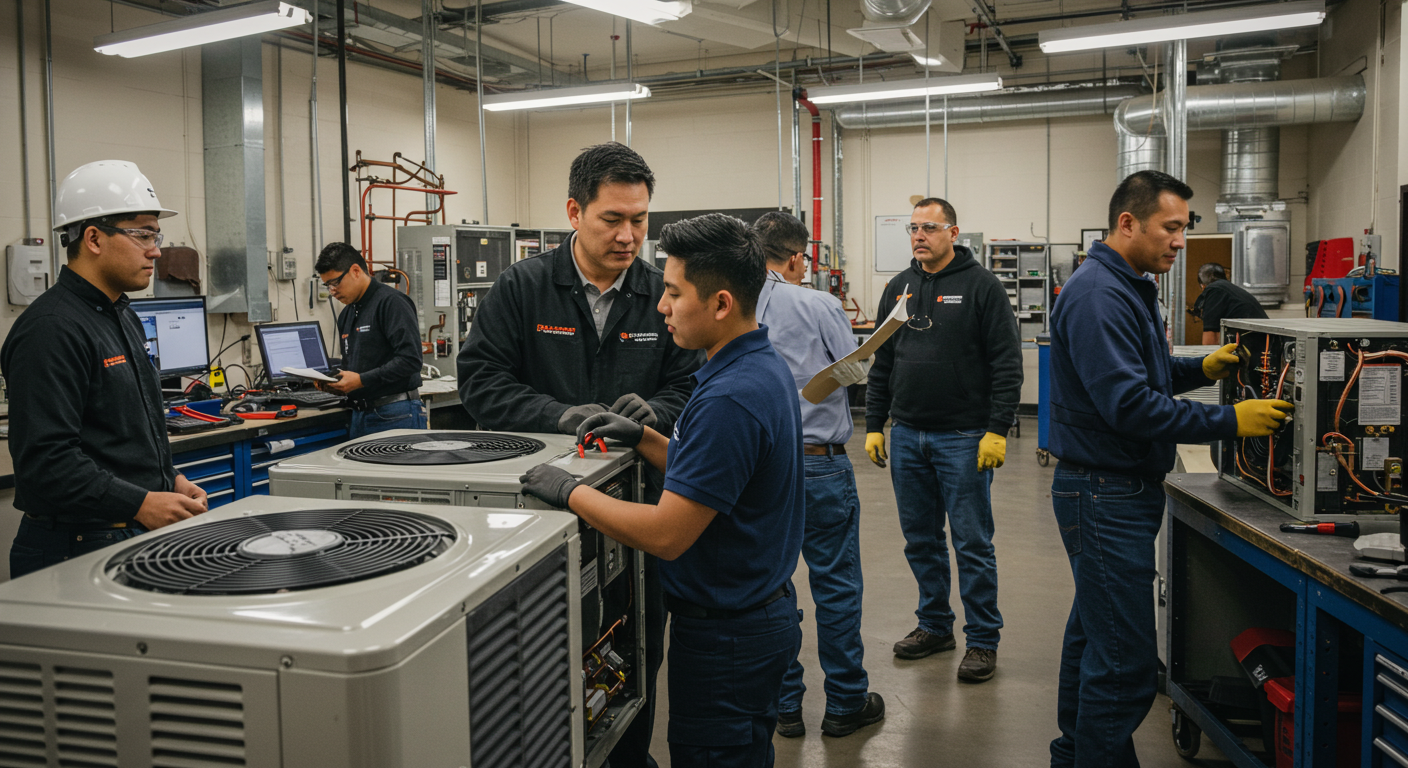Cost-effective HVAC Inventory Management Solutions
In the fast-paced world of HVAC, effective inventory management is key to maintaining your competitive edge. With U.S. HVAC repair spending projected to exceed $10 billion annually by 2025, it’s more important than ever to keep your inventory in check. Aging buildings and rising equipment costs are pushing more consumers to prioritize repairs, creating pressure on HVAC businesses like yours. In this post, we’ll explore cost-effective HVAC inventory management solutions that can help you stay ahead of the game.
The Current State of HVAC Inventory Management
The replacement and retrofit segment is leading the HVAC market, and with inventory growth rates flattening since early 2023, many distributors are facing excess inventory. Price increases and inflation have left their mark, making it essential for you to adapt to these changes. Let’s dive into some strategies that can make your inventory management more efficient and cost-effective.
Advanced Solutions to Reduce Inventory Costs
Implementing advanced inventory management solutions can significantly cut costs and improve efficiency:
- Just-In-Time (JIT) Inventory: This strategy involves ordering parts only as you need them, minimizing storage costs. Accurate demand forecasting is crucial for JIT to work effectively.
- Predictive Analytics: By analyzing historical usage and seasonal trends, predictive analytics can help you optimize stock levels, reducing both overstock and understock risks.
- Vendor-Managed Inventory (VMI): With VMI, you delegate inventory replenishment to your suppliers, freeing you from manual tracking and improving inventory turns.
The Role of Digital Management Tools
Incorporating digital management tools into your operations is essential for navigating the volatility of the HVAC market. ERP systems, advanced forecasting, and data analytics platforms streamline inventories, offering cost savings and adaptability to market changes. A great example is the Ruud Econet 800 Series Smart Thermostat, available through Mar-Hy Distributors, which ties inventory management to the rising demand for smart, connected devices.
Conclusion
Effective HVAC inventory management is not just about reducing costs—it’s about enhancing your field efficiency and customer satisfaction. By implementing strategies like JIT, predictive analytics, and VMI, and leveraging digital tools, you can optimize your inventory and stay ahead of the competition. Remember, the key to success is adaptability.
Ready to optimize your HVAC inventory management? Explore our affordable HVAC inventory software options today!
Frequently Asked Questions
What is the best HVAC inventory software for small businesses?
For small businesses, affordable HVAC inventory software that offers scalability and ease of use, such as QuickBooks Commerce or Fishbowl Inventory, is often recommended.
How can predictive analytics improve my HVAC inventory management?
Predictive analytics uses historical data and trends to forecast demand, helping you optimize stock levels and reduce the risks of overstocking or stockouts.
What are the benefits of Vendor-Managed Inventory (VMI) in HVAC?
VMI allows suppliers to manage your inventory levels, reducing manual tracking and improving inventory turns, which can lead to better cash flow and inventory accuracy.
How does seasonal fluctuation affect HVAC inventory management?
Seasonal fluctuations can lead to significant month-over-month equipment shipment increases, making flexible inventory systems and real-time analytics particularly valuable for managing these changes.
What role do digital tools play in HVAC inventory optimization?
Digital tools such as ERP systems and data analytics platforms streamline inventory processes, reduce costs, and adapt to market changes, ultimately improving operational efficiency.





